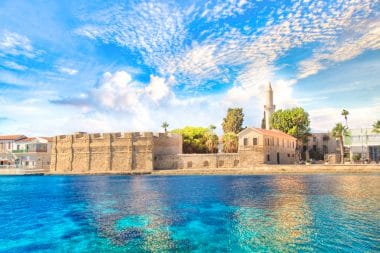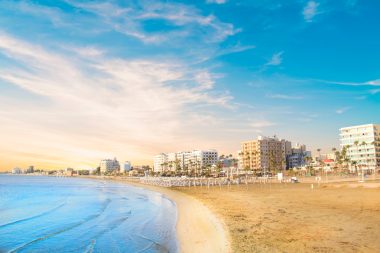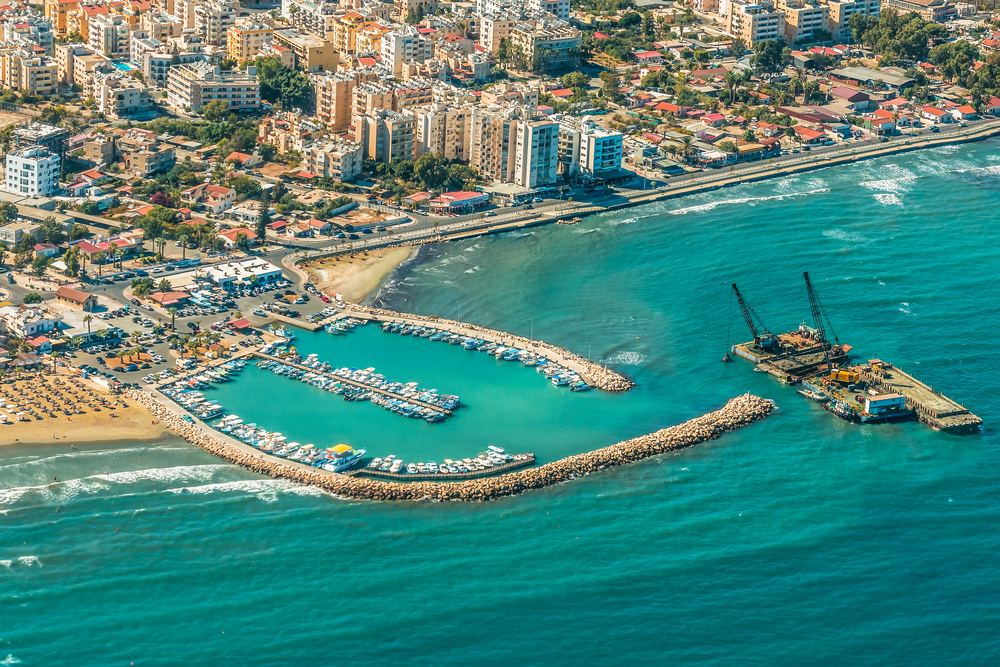The city of Larnaca is located in the southeast of the island of Cyprus. A little more than 50,000 inhabitants live on an area of about 32 km². Larnaca is one of the more modern cities in Cyprus and is therefore popular with tourists from all over the world.
The history of the city
The earliest archaeological evidence in the area of the city dates back to the 13th century. century BC. At that time, the powerful city kingdom of Kition was located here, which owed its wealth mainly to the trade in bronze. Subsequently, the city changed hands several times. These include the Greeks with Alexander the Great, but also the Roman Empire. But even in modern times, Larnaca can boast an eventful history. In the 18th century, the city was developed into a large trading center and numerous European consulates built their headquarters here. Its importance increasingly dwindled in the course of the 20th century. It was not until the Turkish invasion in 1974 that the importance of the port city increased sharply again.
The sights of Larnaca

With more than 3000 years of eventful history, it is no wonder that Larnaca is home to numerous historically significant sights. First and foremost are the Archaeological Museum and the Pierides Museum , which give an overview of the finds of ancient times.
The Turkish fort is also worth mentioning. This was built in 1625 and overlays the walls of a Venetian fortification. Also in Turkish times, the Bekir Pasha Aqueduct was built, which was in operation until the 1960s.
Numerous sacred buildings characterize the cityscape. The church of Agios Lazaros dates back to the 9th century. Its numerous conversion phases are still visible today, even though large parts of the building were destroyed in a fire in 1970. Even older is the Panagia Angeloktisti, a Byzantine church built in the 6th century. The famous apse mosaic, which shows St. Mary, dates from this time.
Excursion destinations near the city
Just a few kilometers southwest of Larnaca is the Hala-Sultan-Tekke salt lake (also called Larnaca salt lake). It is named after the mosque of the same name, which was built in the 18th century. It is considered one of the most impressive Islamic sanctuaries in Cyprus. But not only the building itself and its furnishings, but also the location on the salt lake make a visit to the mosque unforgettable.
Larnaca also has a lot to offer for recreational divers. First and foremost is the wreck of the Zenobia , which lies in front of the city’s harbor. It is considered one of the best lines for divers, since depending on the athlete’s ability, goals can be achieved at different depths.
The city beach of Larnaca

In the middle of Larnaca is the beach Phinikoudes. This name means “small palm trees” and goes back to the plants growing in the sand. The sandy beach, which is several hundred meters wide in places, can be used freely. Parasols and sunbeds can be rented for a fee. Along the beach there is a promenade that is over 500 meters long. Along this promenade there are numerous shops and restaurants that offer a wide range of local and international food. The beach promenade is regularly the scene of large festivals and events. During such major events, swimming on the beach is prohibited.




